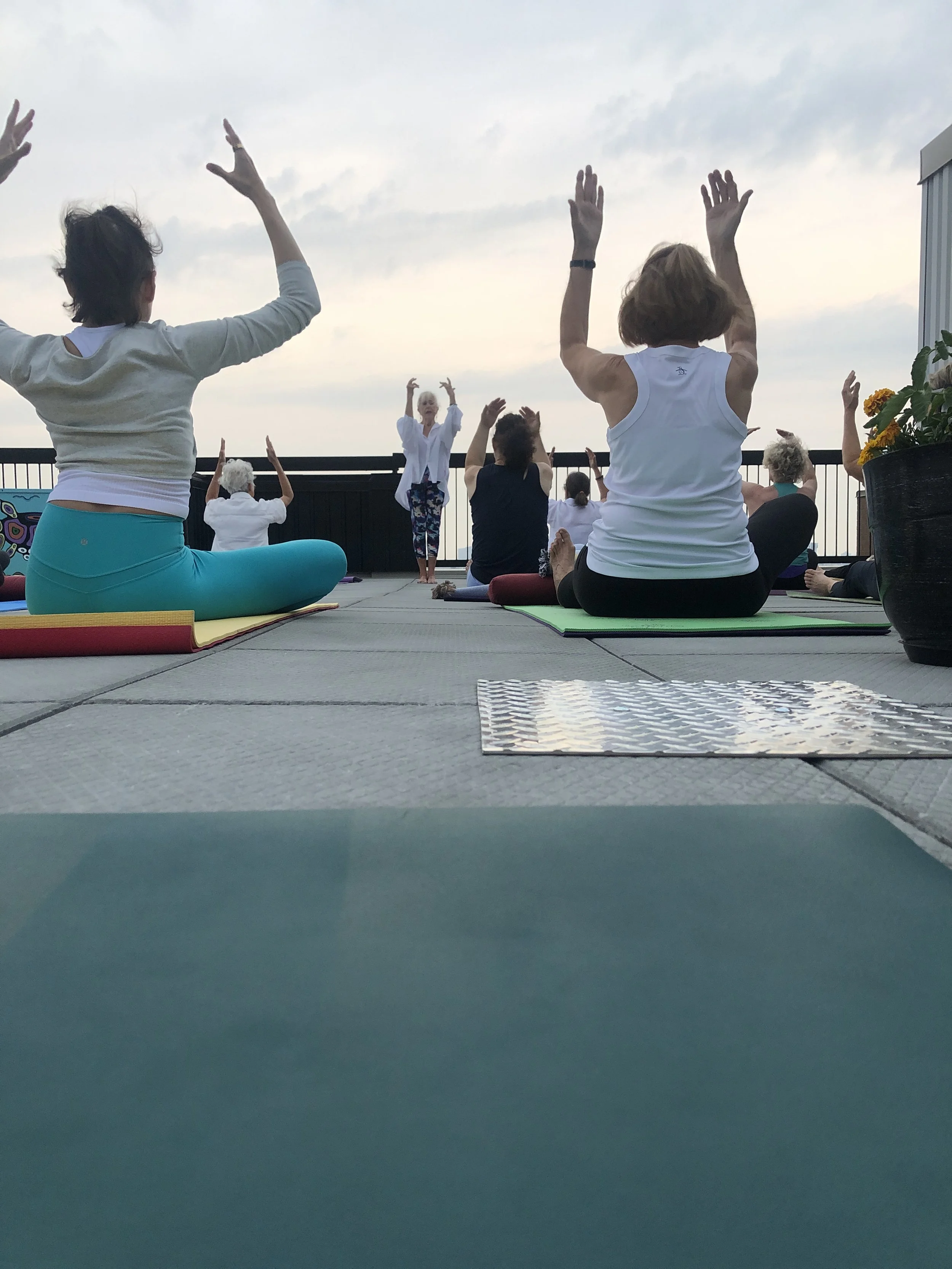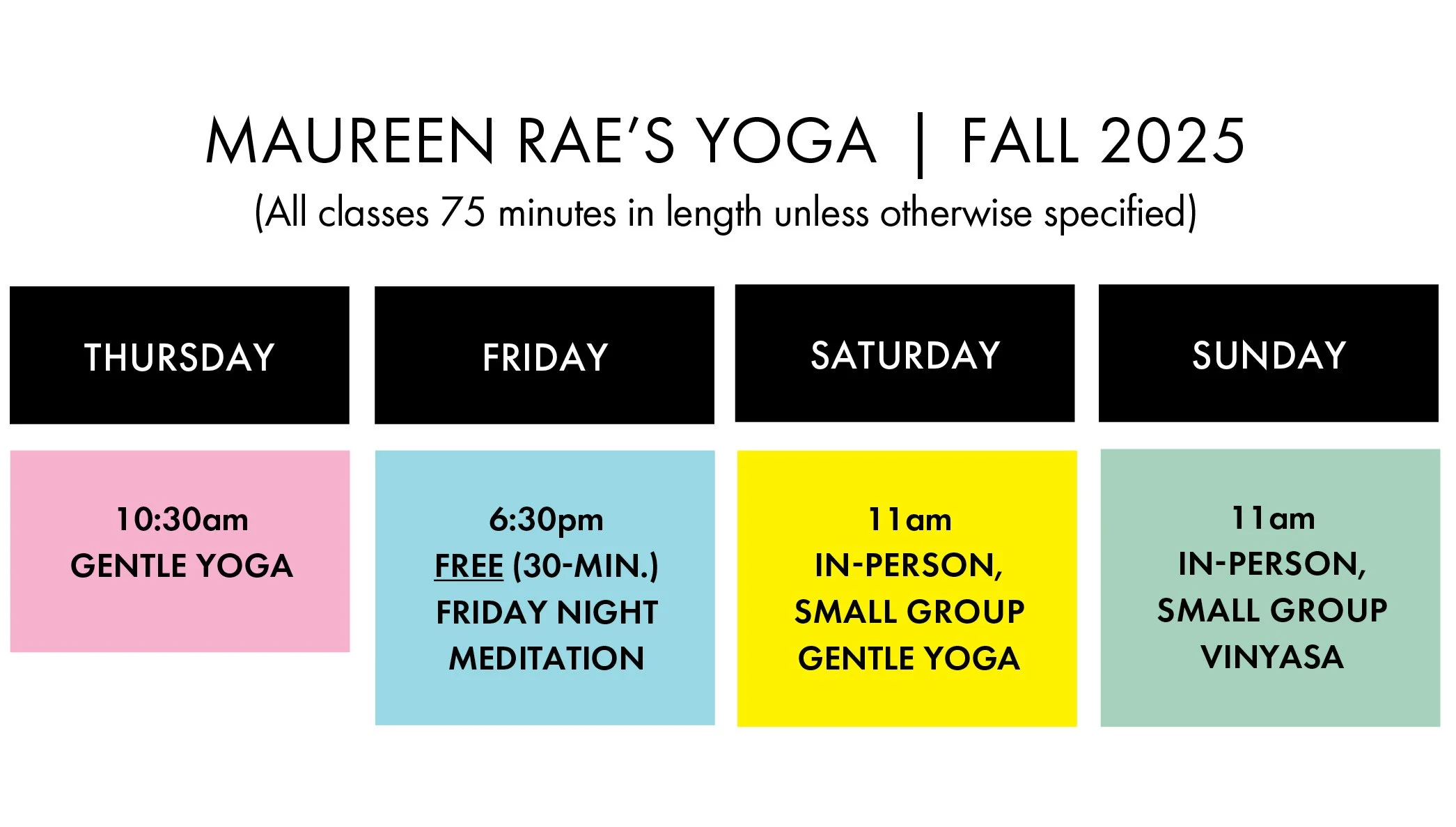“Mindfulness is....
Keeping one’s complete attention
to the experience on a
moment-to-moment basis in an open and non-judgmental way.”
THE TIMELESS TEACHINGS OF YOGA
with Maureen Rae
RN, E-RYT200, YACEP
All classes 75 minutes in length unless otherwise specified.
Sunset Yoga • July 2025
Saturday morning PUPPY YOGA with Maureen and Yogis, along with Suri, Butters and Poppy!
Sunday morning ‘Small Group Yoga’ with Maureen
"I am so happy and appreciative to be practicing with you again. I feel like I am being guided by a master. Total confidence that you have our best interest at heart.
You bring such a welcomed calming and spiritual force to the practice, Maureen. Yoga via the internet does not provide me with the same experience. It has become a bright star within my week!
Forever grateful to you!"
— N.G.





